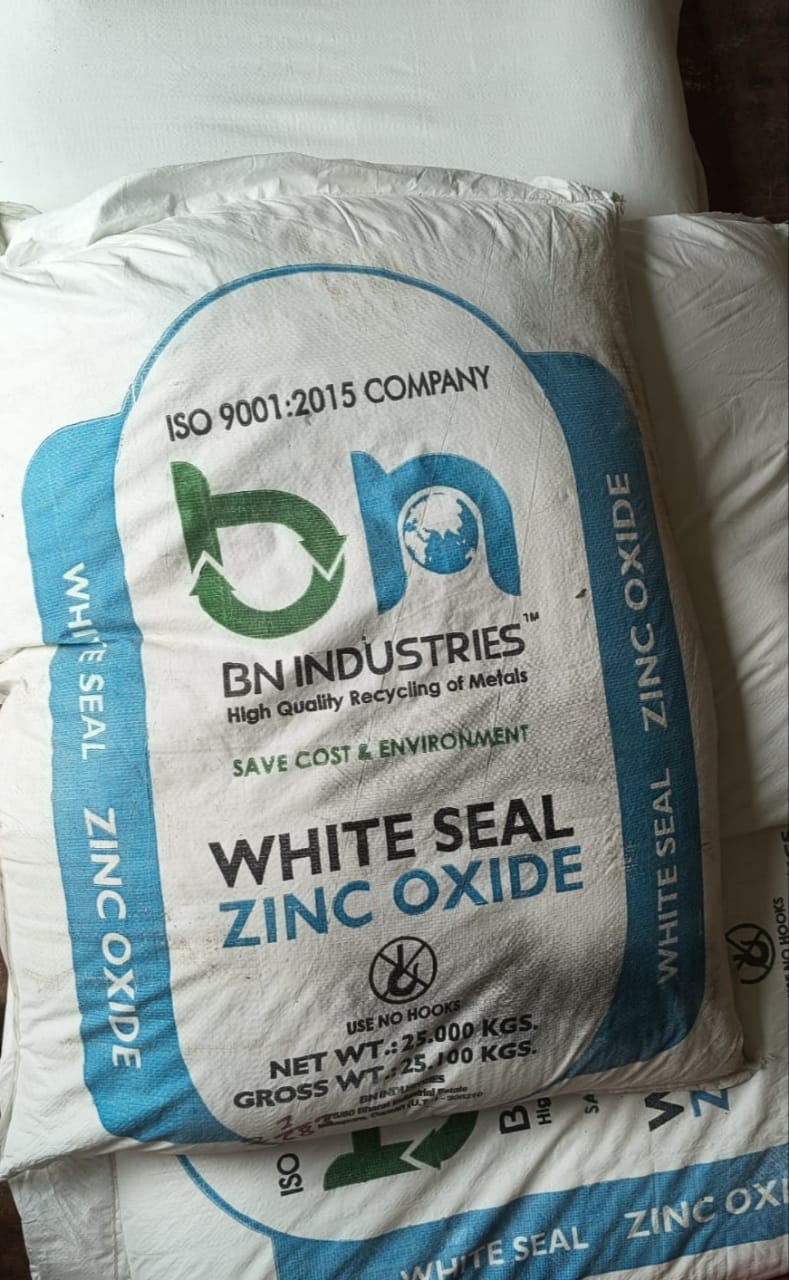
Zinc Oxide
Technical Grade 99.50%
₹232.00
Zinc oxide is a largely inert, white compound which is used very widely as a bulking agent or filler, and as a white pigment. It is found in some rubber, glass and ceramic products, and finds use in the chemical industry as a catalyst. It is also used in paints as a corrosion inhibitor and for mildew control.
Technical Specifications:
Chemical & Physical Properties:
Formula: ZnO
Molecular Weight: 81.40 g/mol
Appearance: White powder, though sometimes described as faint yellowish-white
Odor: Odorless
Density: ~5.6 g/cm³
Melting Point: ~1975 °C (3587 °F)
Solubility: Practically insoluble in water, but dissolves in dilute acids and alkalis
Purity & Impurity Limits (Typical for High-Purity Grades):
Purity (ZnO): Often specified as ≥ 99.5% or ≥ 99.9% on a dry basis
Moisture (110°C): Usually very low, e.g., ≤ 0.10%
Heavy Metals: Strict limits are set for impurities such as:
Lead (Pb): Often < 0.002% or < 20 ppm
Cadmium (Cd): Limits may be < 5 ppm
Iron (Fe), Copper (Cu), Manganese (Mn), Arsenic (As): Also have specified maximum limits
Identification:
CAS Number: 1314-13-2
Uses and Applications of Zinc Oxide Powder:
Zinc oxide powder has wide-ranging industrial applications, most notably in the rubber industry as a vulcanization activator and UV protector for tires. Other key uses include ceramics and glass, where its thermal properties act as a flux, paints and coatings as an anti-corrosive and white pigment, health and personal care products for sunscreens and wound treatments due to its antibacterial and UV-blocking properties, and as a nutrient source in animal feed and fertilizers.
Rubber Industry:
Vulcanization: Activates the vulcanization process, improving the strength, elasticity, and durability of rubber products.
UV and Fungus Protection: Helps protect rubber from degradation caused by UV light and fungal growth.
Ceramics and Glass:
Fluxing Agent: It is used as a fluxing agent in ceramic glazes and enamels, contributing to their melting and binding properties.
Thermal Properties: Its high thermal conductivity, heat capacity, and temperature stability are beneficial in high-temperature applications like heat-resistant glass and cookware.
Paints and Coatings:
Anti-corrosion: It Acts as an effective corrosion inhibitor in paints, especially on steel and galvanized surfaces.
White Pigment: It serves as a white pigment in paints and coatings, providing opacity and mild mildew control.
Health, Personal Care, and Pharmaceuticals:
UV Protection: A key ingredient in sunscreens, it blocks both UVA and UVB radiation from the skin.
Skin Treatment: It is used in ointments and creams for its mild antiseptic and healing properties to treat skin irritations and burns.
Pigment and Filler: Its non-irritating nature and high refractive index make it a popular ingredient in cosmetics and mineral makeup for coverage and UV protection.
Agriculture and Food:
Animal Feed and Fertilizers: It is added as a source of the essential trace element zinc for livestock and in fertilizer formulations.
Food Fortification: Sometimes added to certain food products to provide essential nutrients.
Other Industries:
Chemicals: A precursor in the manufacturing of other chemicals like zinc stearate and zinc diacrylate.
Adhesives and Sealants: It is utilized as a component in the formulation of various adhesives and sealants.
Electronics: Its thermal conductivity makes it suitable for use in thermal pastes to manage heat in electronic devices.
Hazards of Zinc Oxide Powder:
Hazards of zinc oxide powder include metal fume fever from inhaling dust, causing flu-like symptoms, and mechanical irritation to the eyes, skin, and respiratory tract. Ingestion can cause nausea, vomiting, and stomach pain. It also poses a fire hazard when mixed with combustible materials and is very toxic to aquatic life, requiring care to prevent environmental release.
Packaging: 25 Kg. Bag
MOQ: 50 Kg.
Estimated Lead Time: 1 day
"in stock"
